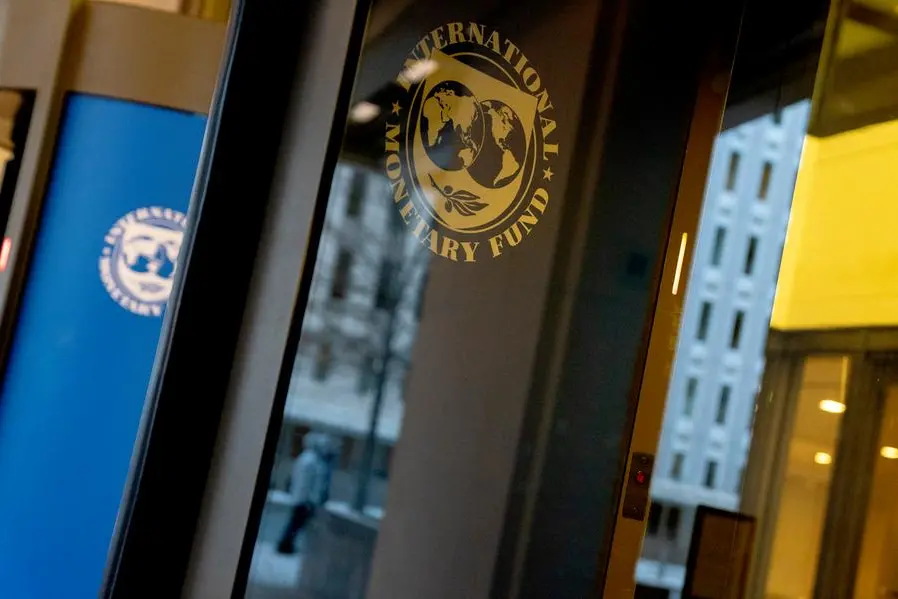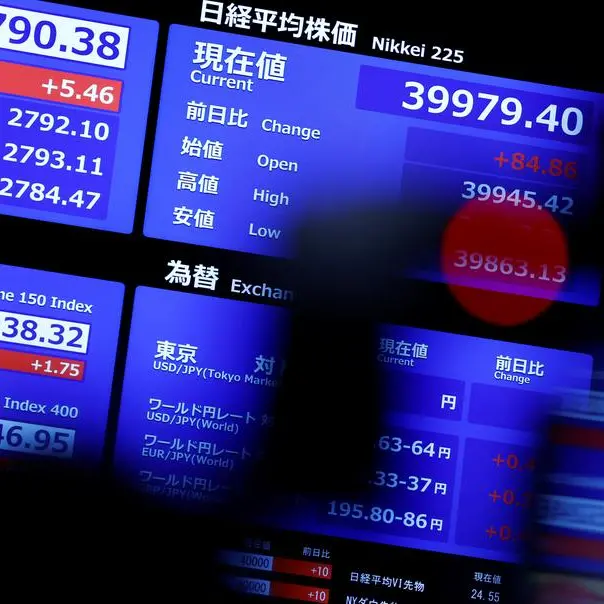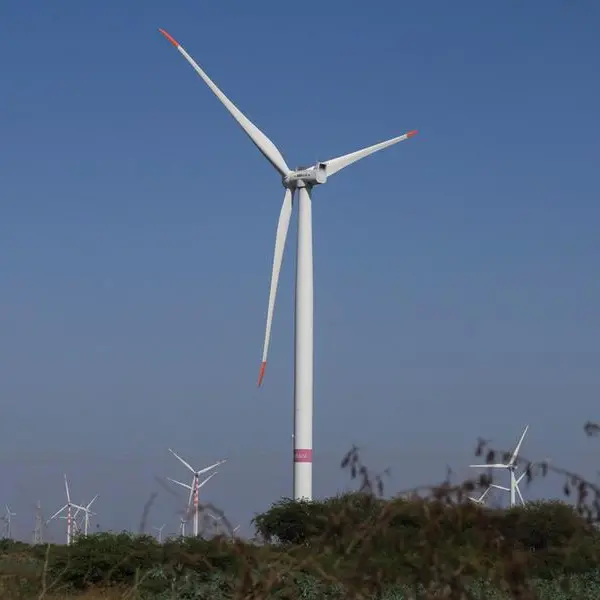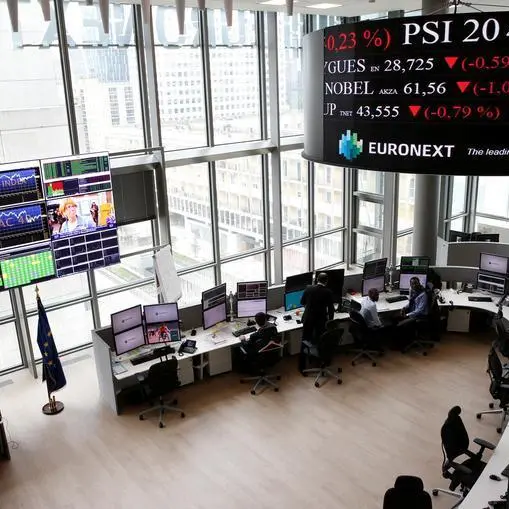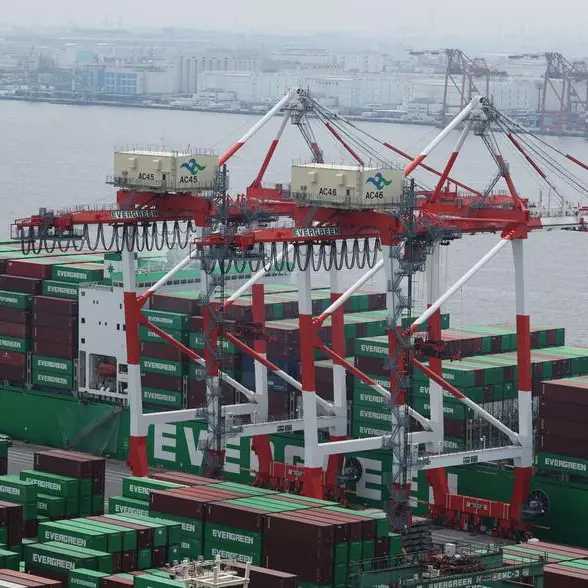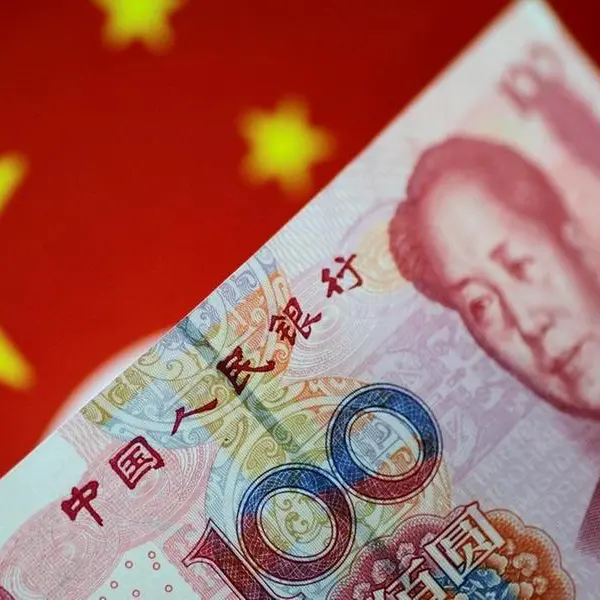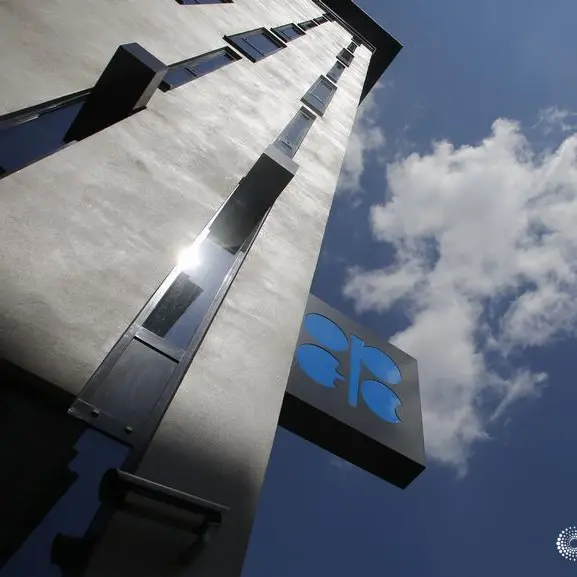PHOTO
The seal for the International Monetary Fund (IMF) is seen in Washington, DC on January 10, 2022. (Photo by Stefani Reynolds / AFP)
EDINBURGH – The Bretton Woods institutions – the International Monetary Fund and the World Bank – are now 80 years old. But they are as under-resourced and poorly supported by national governments as at any time in their history. Their predicament is perhaps the clearest sign that economic and financial multilateralism is fragmenting along with the global economy. Worse, this fragmentation comes at a time of rising international tensions, financial fragility, sputtering growth, rising poverty, and mounting reconstruction bills in Gaza, Lebanon, Ukraine, and elsewhere.
Both institutions are led by individuals who grasp the urgent need for reform to meet today’s challenges. Yet they lack sufficient support from their political masters: the largest share-holding countries whose votes are crucial for reform. To overcome the longstanding international coordination problems that have undermined reform efforts, we need a revamped G20 to take the lead. With its current chair, Brazil, it is well-placed to make significant progress.
The Costs of Under-Investment
Financial firepower is of course only one measure of the effectiveness of our multinational institutions, but it is an important one given the world we live in. The resources available to the IMF represent less than 1% (specifically 0.85%) of the global economy. Yet, as the lender of last resort and a financial safety net for the world, it is expected to deal with the problems of 191 member countries, as well as joining the global response to “non-traditional” and “new” issues such as climate change, gender disparities, and inequality.
Such under-funding contradicts the intentions of the IMF’s founders, led by the United Kingdom and the United States. At its creation, the Fund could draw on resources equal to roughly 3% of global GDP to help address a mere 44 countries’ monetary and balance-of-payments problems. Since then, IMF membership has grown fourfold, yet its resources have declined by more than two-thirds relative to GDP. This erosion is reflected in the Fund’s waning global heft and loss of capacity to solve tricky country cases.
Consider the following examples. Four decades ago, in the seminal restructuring of Mexico’s debt, the IMF promised one-third of what Mexico needed, on the expectation that commercial creditors would contribute the remainder. That financial capability then allowed it to press the private sector to accept a solution that traded off some of the creditors’ contractual claims on Mexico for an improved outlook for financial viability.
By contrast, after Zambia defaulted in 2020, the IMF provided it with less than 10% of its financing needs. Despite such support, Zambia has struggled through four years of negotiations with creditors to finalize restructuring agreements. While part of the challenge reflects the changing composition of both private and public creditors, much of it also stems from the diminished effectiveness of the Fund’s “carrot and stick” approach.
A Dangerous World
This is no small challenge for an institution that also plays critical surveillance and technical assistance roles, serving as the anchor of the international financial safety net (alongside more narrowly focused bilateral swap lines and ad hoc regional pooling arrangements). As we detailed in Permacrisis (co-authored with Michael Spence and Reid Lidow), there are reasons to worry that the kind of shocks we have been experiencing (from COVID-19 to the Ukraine and Gaza wars) will become even more frequent and violent in the years ahead, not least because of the climate challenge. The disturbing inadequacy of today’s safety nets, especially for the most vulnerable countries and segments of society, is proving to be an additional source of fragility and instability.
Despite these rising challenges, the IMF’s resources remain below historical levels, and the most recent quota review failed to produce a net increase in its lending capacity. In fact, between March 2020 and March 2023, the IMF committed $191 billion (and disbursed less than $75 billion) of its trillion-dollar resource base.
The Fund’s surveillance role also faces major challenges. Framed as a crisis-prevention tool for both individual countries and the overall system, IMF surveillance has, over decades, failed to predict and correctly frame economic shocks. Admittedly, national policymakers have failed, too. Some failures are understandable, as in the case of the pandemic. But others, including the supply-chain disruptions and subsequent surge in inflation, could have been foreseen and subjected to better analysis. Such slippages support the case for new investments in a more effective system of surveillance.
The World Bank is even less adequately resourced for the additional climate responsibilities it has been given. In a report commissioned by the Indian G20 presidency last year, co-chairs Lawrence H. Summers and N.K. Singh argued that multilateral development banks (MDBs) need to triple their lending by 2030, when it should be around $400 billion annually. Yet allocations to lower- and middle-income countries in 2023 were equivalent to just 0.07% of global GDP. The $73 billion earmarked for the World Bank in the 2023 fiscal year represented the smallest commitment to development in the institution’s existence.
The Great Unraveling
What ails the IMF and the World Bank is not limited to these two institutions. We are witnessing a broader and increasingly worrisome breakdown in multilateralism – and this at a time when the world’s common problems can be solved only through coordination and common action.
Today’s MDBs, which include the regional development banks, provide loans equivalent to just 0.5% of developing countries’ gross national income, down from a peak of 0.7% in the 1990s. Equally, the World Trade Organization struggles with an overly legalistic judge-based rulebook that was imposed on it at the height of neoliberalism in the 1990s. Its effectiveness has always hinged on negotiation, conciliation, and arbitration, but these approaches have taken a back seat to geopolitical rivalries and unilateralism in recent decades.
Then there is the World Health Organization. Though the WHO’s current replenishment target is $11 billion, only $4 billion has been guaranteed, and its annual budget is no larger than that of medium-size US hospitals. By denying the WHO the resources it needs, while at the same time asking it to cover new health concerns, including well-being as a whole, we are depriving ourselves of the benefits of a global institution that finds it difficult to finance even its most basic tasks.
Finally, the creation of the G20 was a welcome response to the realization that the G7 no longer represented the face of global economic influence and power. By bringing together countries that account for around 80% of world GDP, the G20 had the best chance of helping us prevent or manage systemic crises like the one in 2008-10.
Yet despite its obvious potential, the G20 has operated without a structure to ensure continuity and effectiveness. And because its members include Russia and China, the US still prefers to work through the G7, which Jake Sullivan, the current national security adviser, sees as “the steering committee of the free world,” even though G7 countries now represent only 43% of world GDP.
The Multilateral Way or the Highway
A sweeping approach to reforming the world’s multilateral institutions – often presented under the banner of “Bretton Woods 2.0” – is unlikely to get off the ground. But incremental progress is possible. Initiative by initiative, it could develop into a critical mass that would be welfare-enhancing for many, if not most, countries and people.
The WTO, for example, should focus on leveraging the undeniable skills of its current director-general, Ngozi Okonjo-Iweala, to solve trade disputes through conciliation, arbitration, and negotiation. That would mark a move away from its overly legalistic, and now broken, judge-based appeal system.
Similarly, the IMF, led by an equally charismatic managing director, can enhance its contributions to crisis prevention and resolution by leaning into its role as a global early-warning system. That also means responding to any future crisis with more financial firepower and by mobilizing lending capacity to enhance resilience against economic shocks, to negotiate a much-improved sovereign-debt restructuring mechanism, and thus to create a more comprehensive global financial safety net with limited conditionality in situations of large exogenous shocks.
While high-income countries have borrowing capacity and reserves to weather most shocks, some emerging markets do not, and low-income countries are even more exposed, given their limited reserves and high vulnerability to losing access to financial markets. Faced with the threat of sovereign defaults and a lost decade of development, too many indebted countries have sought alternative ways to avoid what they view as overly harsh conditions imposed by multilateral lenders. But to avoid defaulting, many governments have reallocated their health and education spending. Tragically, 3.3 billion people now live in countries that spend more on interest payments than on these two basic services.
The Bretton Woods institutions also need to support developing countries’ urgent climate-mitigation and adaptation needs. Failure to do so would not only jeopardize tens of millions of people’s well-being; it also would have negative cross-border spillovers, including through migration pressures. Both organizations have taken some steps to meet developing countries’ (excluding China) need for $1 trillion of annual external funding by 2030. For example, the World Bank has arranged for “catastrophe bonds” to assist countries devastated by the increasing number of natural disasters, and the IMF has introduced a Resilience and Sustainability Trust as a lending window that is resourced through voluntary reallocations of Special Drawing Rights (SDRs, the IMF’s reserve asset). But these interventions are not enough.
To be sure, the World Bank now directs 41% of its lending to climate-related projects, and its new mission statement refers to “a livable planet.” But without a significant increase in its overall resources, this new focus on climate change could come at the expense of investments in human capital and its traditional development work, unless wealthy countries put up more money. There are no shortcuts.
The key to revitalizing the world’s multilateral institutions is to reform their governance to reflect the enormous shifts in the configuration of the global economy over the past few decades. The shareholding structure of the IMF and the World Bank, and the outmoded process of allocating top jobs according to nationality, are no longer in step with current realities.
Even today, 59.1% of voting shares in the IMF are held by countries representing just 13.7% of the world’s population. India and China are the world’s two most systemically important and influential emerging economies, yet their combined share is only 9%. Without a change here, an institution that is supposed to address the world’s biggest economic and financial problems will face growing doubts about its legitimacy, fairness, and effectiveness by most of the Global South.
Elephants in the Room
Inadequate governance is not the only legacy issue frustrating progress. More needs to be done, and quickly, to deal with excessive debt and debt-service costs in the 79 low- and middle-income countries that are deemed to be in debt distress or at high risk of it. The situation demands a plan for comprehensive, sustainable, and incentive-aligned debt relief, including through re-profiling existing loans, debt swaps, and credit guarantees.
First, IMF member states should strengthen the Fund’s capacity to provide otherwise well-managed debt-distressed countries regular annual allocations of its “in-house” financial instrument. Although $650 billion in SDRs were allocated in 2021, only $21 billion went to the lowest-income countries that were most in need of help. The rules for SDR allocations need to be fundamentally revised, and redistribution made more automatic, if this channel is to be used more effectively to counter future systemic shocks.
Second, making the Common Framework for Debt Treatments work better will require closer cooperation with China’s government and private creditors. Both carrots and sticks need to be revamped. The alternative of protracted negotiations, side deals, and incomplete restructuring often produces only limited benefits, and it is open to abuse. In addition to delaying comprehensive solutions, such temporary fixes can make the next round of restructurings even more complicated.
Third, the IMF needs to address the perceived lack of fairness in the conditions that it requires poorer countries to meet when seeking relief. Fortunately, the managing director is clearly aware of the need to lower the punitive interest rates charged to middle-income countries. In 2020, ten countries faced surcharges to the IMF, yet by 2023, that figure had more than doubled, reaching 22, owing to the impact of the pandemic, the conflict in Ukraine, and rising interest rates. On top of that, the IMF’s basic lending rate soared, from below 1% to nearly 5%, pushing the overall rate for countries incurring surcharges as high as 7.8%. The IMF’s recently launched review of its surcharge policy now provides a platform for changes that would not undermine its preferred-creditor status.
Finally, as a preventive measure, governments need to come together to establish an equitable global financial safety net. As Masood Ahmed, president emeritus of the Center for Global Development, has argued, there should be “a separate identifiable IMF facility that would be triggered by a defined systemic shock and provide resources to all emerging markets and low-income countries in good standing” without the penalties of excessively priced surcharges.
As for the World Bank, its dynamic president, Ajay Banga, has started his term with a determination to reform and is on the right track in launching a Livable Planet Fund focused on human capital and environmental stewardship. But this initiative needs more resources, and Banga has justifiably called for the largest-ever replenishment of the International Development Association, which provides concessional loans and grants to the poorest countries.
Given the rising number of global poor – now at 700 million – we cannot settle for less. The Summers/Singh G20 report not only calls on MDBs to provide an additional $260 billion per year but also urges expanded use of innovative financial tools such as guarantees, risk-mitigation instruments, and hybrid capital.
Reform or Decay
Given that the G7 cannot, in fact, be the permanent steering committee for a world economy in which its members have a minority share, the G20 should become what it was intended to be: the premier forum for global economic cooperation, including when it comes to promoting the reform of the multilateral institutions. But that will require a more representative system to offer smaller countries a role in a constituency-based framework, as well as a professional secretariat to ensure continuity from year to year.
The Brazilian G20 presidency has already laid out three key priorities for the November meeting: fighting hunger, poverty, and inequality; promoting sustainable development; and pursuing global governance reform. All three goals could pave the way for a new decade of improved cooperation, with the third in particular offering a welcome opportunity to overcome the inter-country coordination problems that have frustrated the necessary changes at the IMF and World Bank. We know what needs to happen and why. If well managed, this G20 could provide the sought-after “how.”
Massive revisions to the international system and its institutions generally come about only after a complete breakdown of the current order. Hence, the post-1814 balance of power emerged after Napoleon’s defeat; the post-1918 Versailles system arose after five dynastic empires collapsed and shattered into dozens of new nation-states; the post-1945 architecture followed the defeat of Germany, Italy, and Japan; and what US President George H.W. Bush called a liberal “new world order” had to wait until the collapse of the Soviet Union and the Warsaw Pact.
The urgent challenge today is to achieve the transition to a fifth world order without weathering a damaging breakdown. To be legitimate, such an order must account for the ongoing global realignment of economic and political power, especially the ambitions of the Global South. And to be effective, it must be not only stable and fair, but also sustainable and open to effective collective action.
Two paths are open to us. One leads toward ever more global fragmentation and deepening crises, while the other offers a chance to pursue both individual and shared prosperity through joint solutions to common problems. The choice seems crystal clear.
Gordon Brown, a former prime minister of the United Kingdom, is UN Special Envoy for Global Education and Chair of Education Cannot Wait. Mohamed A. El-Erian, President of Queens’ College at the University of Cambridge, is a professor at the Wharton School of the University of Pennsylvania and the author of The Only Game in Town: Central Banks, Instability, and Avoiding the Next Collapse (Random House, 2016) and a co-author (with Gordon Brown, Michael Spence, and Reid Lidow) of Permacrisis: A Plan to Fix a Fractured World (Simon & Schuster, 2023).
Copyright: Project Syndicate, 2024.
www.project-syndicate.org
